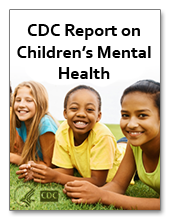Fidelity monitoring for Legacy : Tools and resources

What is fidelity and why is it important?
Fidelity refers to how closely a program follows the way it was designed to be implemented. Fidelity is important because evidence-based programs, like Legacy, have demonstrated specific impacts on child development and positive parenting practices when implemented in a specific way.
Because different sites and participants have their own strengths and challenges, programs like Legacy have some flexibility in implementation to meet the needs of the groups. But if the critical components of the Legacy model are not implemented or are substantially changed, your participants may not have the expected results. Using fidelity tools allows programs to ensure that the critical components are retained.
How do I use the Legacy fidelity monitoring tools?
Legacy staff use fidelity monitoring tools throughout the program to monitor that the program is delivered as intended and for seamless quality improvement. These tools are also resources for self-reflection and for making quality adjustments to how you run your Legacy groups. Fidelity monitoring and quality assurance tools provide your organization with invaluable information on how your mothers are doing, what worked well or needs improvement, and what opportunities or barriers may exist in your program.
The five types of monitoring tools are described in the table below. Each tool is available in Microsoft Word or fillable PDF form. Contact LegacyforChildren@cdc.gov for more information.
| Fidelity Tool | Completed by | When completed | Content |
|---|---|---|---|
|
Quality Assurance Tools |
|||
| Parent Group Summary Form | Group leader | After each session |
|
| Parent Engagement Form | Group leader | After 10 sessions |
|
| Fidelity Assessment Monitoring Tool | Group supervisor | UCLA: Twice during Blocks 1 & 21 (after observing one mother-only, one mother-child session), then once during the subsequent blocks (alternating type of session observed)
UM: every quarter |
|
|
Program Implementation Tools |
|||
| Parent Satisfaction Scale | Legacy mothers | At the end of each implementation year |
|
| Organizational Survey | Legacy implementation team | At the end of each implementation year |
|
1Note: the UCLA curriculum is delivered in blocks of 10 sessions, followed by a break of about 4 weeks.
- Page last reviewed: July 5, 2017
- Page last updated: July 5, 2017
- Content source:
- Division of Human Development and Disabilities, National Center on Birth Defects and Developmental Disabilities, Centers for Disease Control and Prevention



 ShareCompartir
ShareCompartir